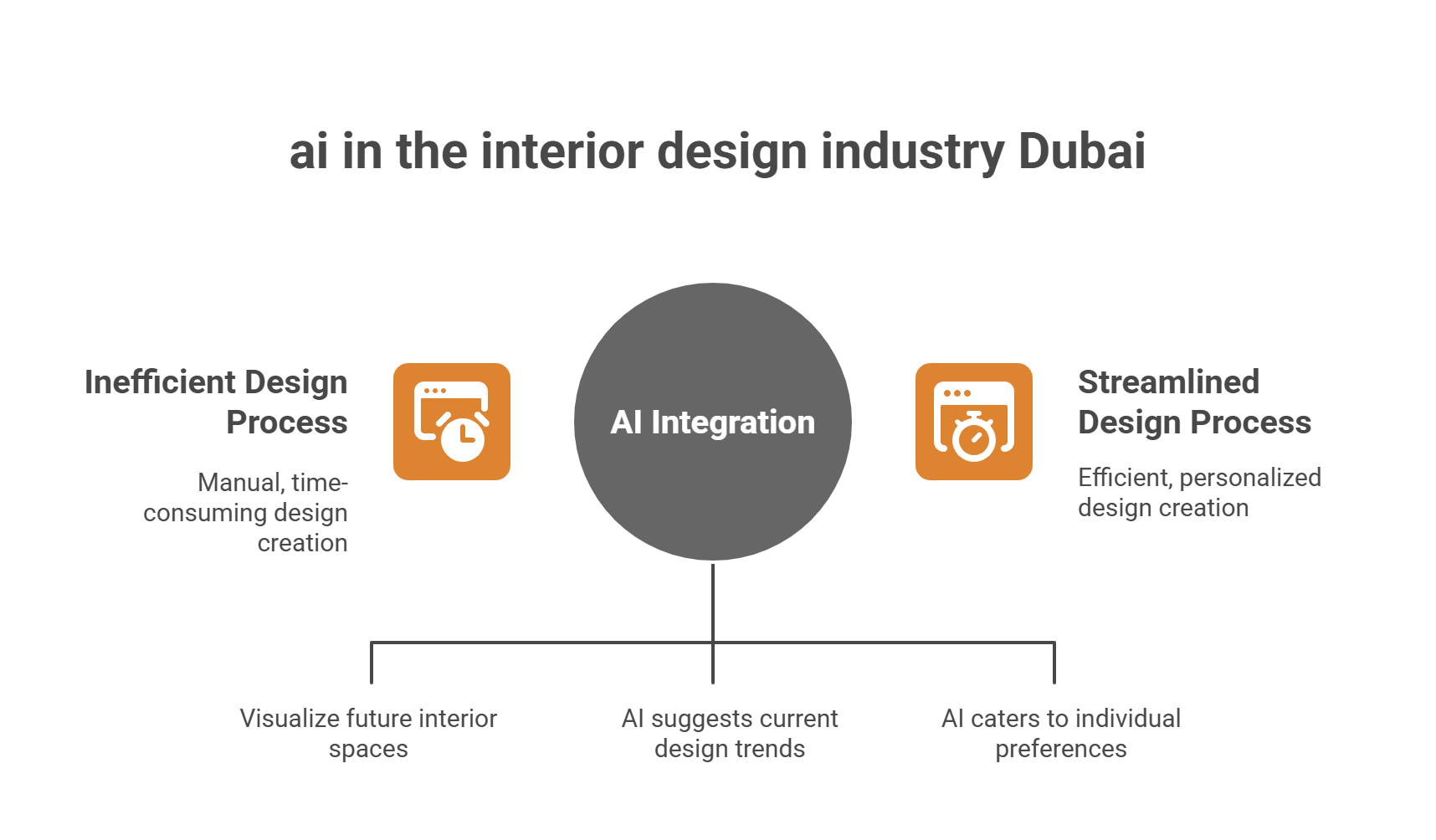Dubai’s glittering skyline is a testament to its ambition, a city constantly reinventing itself at the intersection of luxury and innovation. Now, a new, invisible force is reshaping its interiors: Artificial Intelligence. Far from being a futuristic gimmick, AI is becoming a strategic imperative, fundamentally transforming how spaces are imagined, designed, and experienced.
This revolution isn’t happening by chance; it’s fueled by a unique combination of visionary government policy, a hyper-competitive real estate market, and the sophisticated demands of a global clientele.
This article delves into the AI-powered transformation of Dubai’s interior design industry. We’ll explore the key drivers behind this shift, dissect how AI is re-architecting the entire design workflow, and identify the major players—from tech startups to powerhouse developers—who are writing this new chapter.
Finally, we will look at how the role of the human designer is evolving and what the future holds for this dynamic ecosystem.
The Dubai Mandate: A Perfect Storm for AI Adoption
The rapid integration of AI into Dubai’s design world is the result of a powerful convergence of top-down vision and bottom-up market pressure. This has created an exceptionally fertile ground for technological innovation, accelerating adoption at a pace unseen in other global design hubs.
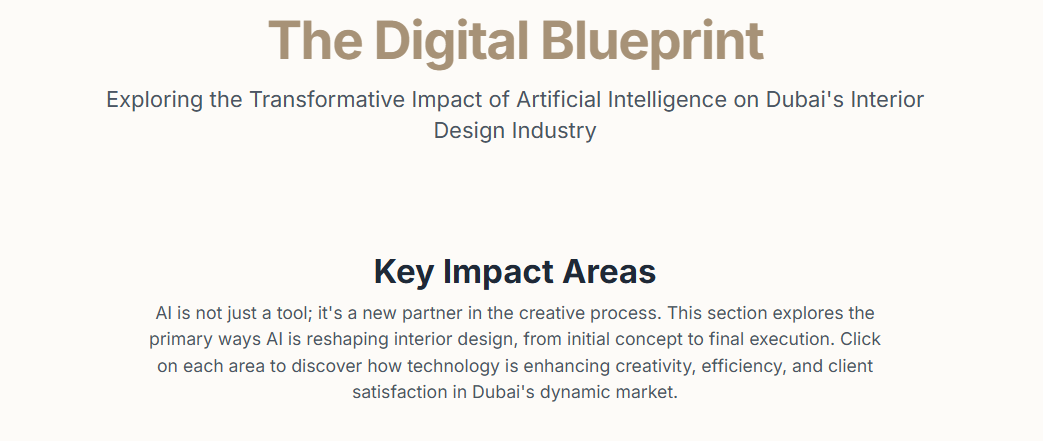
A Vision for a Smart City
At the highest level, the push for AI is embedded in national policy. The Dubai Urban Master Plan 2040 is a comprehensive blueprint that explicitly calls for the integration of smart technologies to create a more sustainable and efficient urban environment.
This government mandate sends a clear signal to the entire real estate ecosystem: investing in technology like AI is not just encouraged, it’s essential to the Emirate’s future. This official backing de-risks innovation and fosters a culture where technological advancement is expected and rewarded.
The Demands of a Global Real Estate Powerhouse
Dubai’s real estate market is booming, attracting a significant international investor base that accounts for over 40% of property investments. For these overseas buyers, AI-powered tools are not a luxury but a necessity.
Photorealistic virtual staging, AI-enhanced walkthroughs, and augmented reality (AR) customization tools are vital for building trust and allowing investors to explore and personalize a space from anywhere in the world. Even the Dubai Land Department (DLD) has embraced AI, legitimizing the technology and setting a tech-first precedent for the entire industry.
The Expectations of Unparalleled Luxury
Dubai’s brand is synonymous with luxury and cutting-edge design, which cultivates a client base with exceptionally high expectations. Today’s luxury buyer demands more than just aesthetics; they want intelligent, responsive homes that enhance their wellness and lifestyle.
AI is the enabling technology that delivers on this promise. It powers smart home systems that learn a resident’s habits, optimizes energy consumption, and allows for a level of hyper-personalization that was previously impossible. This client-driven push forces designers and developers to integrate AI not just as a design tool, but as a core feature of the final product.
The AI-Powered Workflow: From Ideation to Habitation
Artificial Intelligence is fundamentally re-architecting every stage of the interior design process, transforming it from a linear, labour-intensive sequence into a dynamic and data-driven workflow.
Phase 1: Generative AI for Conceptual Exploration
The creative process now often begins with generative AI. Tools like Midjourney allow designers to input text prompts describing a theme, mood, or style—”a minimalist majlis with neoclassical influences in the afternoon light”—and receive a multitude of visual concepts in seconds. This dramatically accelerates the initial brainstorming phase, enabling a much broader exploration of creative possibilities before committing to a specific direction.
Phase 2: Algorithmic Space Planning and Optimization
Once a concept is chosen, AI algorithms take on the technical task of space planning. Platforms like Planner 5D can analyze a room’s dimensions, functional requirements, and traffic flow to generate multiple optimized floor plans. This automates a historically time-consuming task, freeing designers to focus on refining the best options rather than manually drafting each one from scratch.

Phase 3: Hyper-Realistic Visualization and Immersive Experiences
Perhaps the most impactful application of AI in the Dubai market is in visualization. In a fast-paced, off-plan real estate sector, compelling visuals are everything. AI-powered platforms like Spacely AI and REimagine Home can generate photorealistic 3D renderings and virtual stagings in minutes, a task that once took days. These high-quality visuals are indispensable for client presentations and the immersive virtual tours critical for engaging international buyers.

The Hybrid Intelligence Model
While consumer apps promise to “fire your interior designer,” the luxury segment demands a more nuanced approach. This has given rise to a “Hybrid Intelligence” model, where firms strategically combine AI’s computational power with the irreplaceable expertise of a human designer. In this workflow, AI acts as a powerful assistant, handling the heavy lifting of rendering variations and analyzing data.
The human designer then steps in to curate these outputs, apply emotional intelligence, infuse the project with a unique artistic vision, and manage the high-touch client relationship. This synergy allows firms to achieve the speed of technology while delivering the creative excellence the luxury market demands.
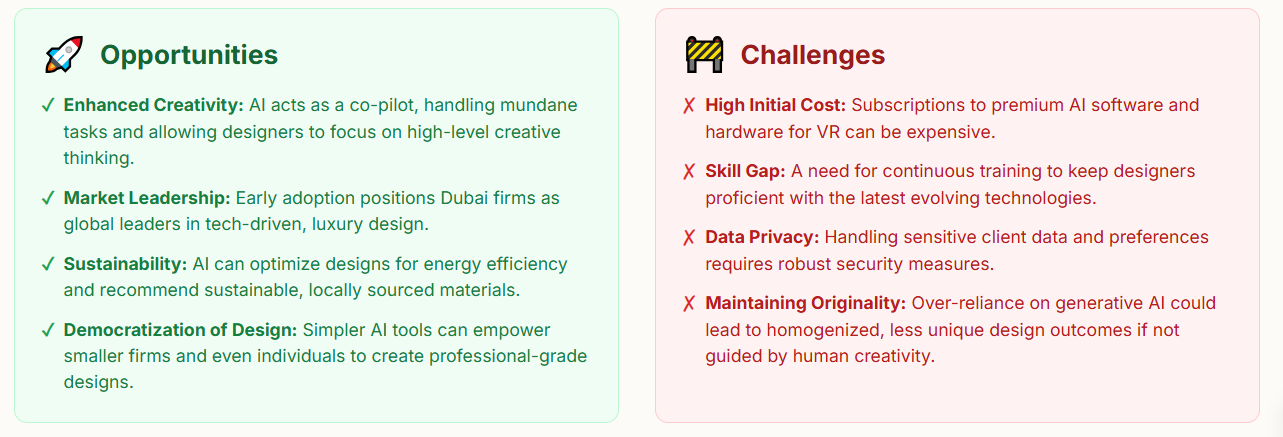
The Evolving Ecosystem and the Future of the Designer
Dubai’s AI-in-design landscape is a dynamic network of technology providers, design firms, and the real estate developers who are ultimately driving demand.
Key Players in the Market
- The Innovators (Tech Providers): This group includes global platforms like Planner 5D and homegrown startups like Curtainz.ai, which offers a specialized AI tool for visualizing window treatments.
- The Adopters (Design Firms): Forward-thinking firms like Origa Design specialize in integrating AI and IoT for smart homes, while established luxury firms like Algedra Interior Design use AI to enhance client presentations and project management.
- The Enablers (Real Estate Developers): This is the most powerful force. Industry leaders like Emaar and DAMAC Properties are the primary enablers, demanding and funding AI-driven solutions to accelerate sales and enhance project value. Projects like Object 1’s ALTA V1EW tower are explicitly marketed on their “tech-enabled lifestyle,” making integrated AI a core part of the property’s value proposition.
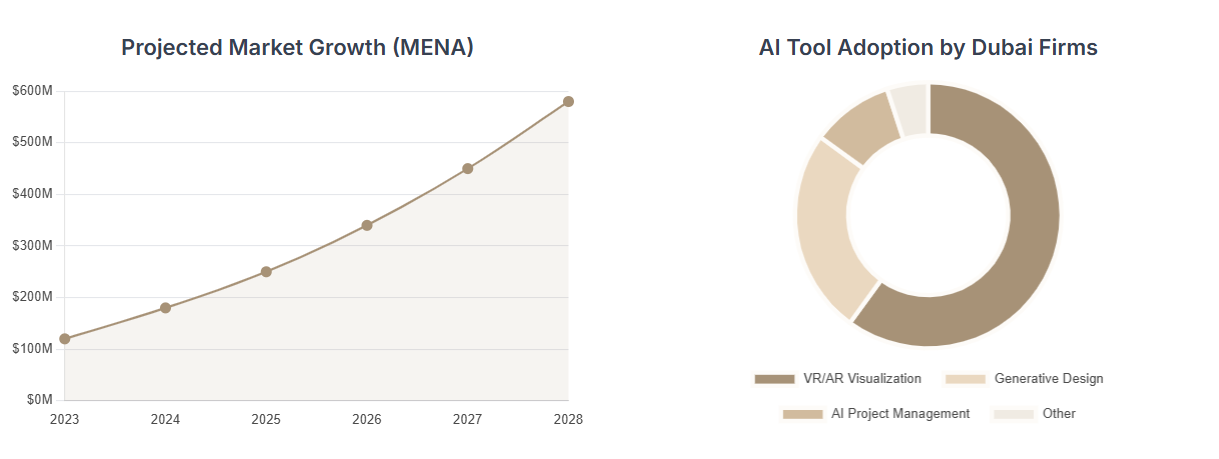
The Human-AI Symbiosis
The narrative of AI replacing human designers is proving to be a misconception. Instead, AI is acting as a “force multiplier,” automating tedious tasks and elevating the designer’s role. This is creating a bifurcation in the profession. While the lower end of the market may become more commoditized, the high end—which dominates in Dubai—will place an even greater premium on “AI-augmented” designers.
These professionals will not compete with AI; they will leverage it. Their value will lie in their strategic vision, creative curation, emotional intelligence, and cultural sensitivity—qualities an algorithm cannot replicate. The modern designer’s imperative is to upskill, mastering prompt engineering and data literacy to collaborate effectively with their new digital partner.
A Strategic Look Ahead: 2025-2030
The trajectory for AI in Dubai’s interior design industry points towards deeper integration and greater sophistication. We can anticipate several key trends:
- The Rise of Digital Twins: Moving beyond static 3D models, the industry will embrace digital twins—living virtual replicas of physical buildings fed by real-time data. These will allow for predictive maintenance and optimized building operations.
- Hyper-Personalization at Scale: AI will enable developers to offer mass customization of off-plan units, allowing buyers to choose from thousands of pre-validated design packages for finishes, layouts, and furniture.
- Integrated AI Platforms: The market will likely consolidate around comprehensive platforms that manage the entire project lifecycle, from initial concept to post-occupancy operations.
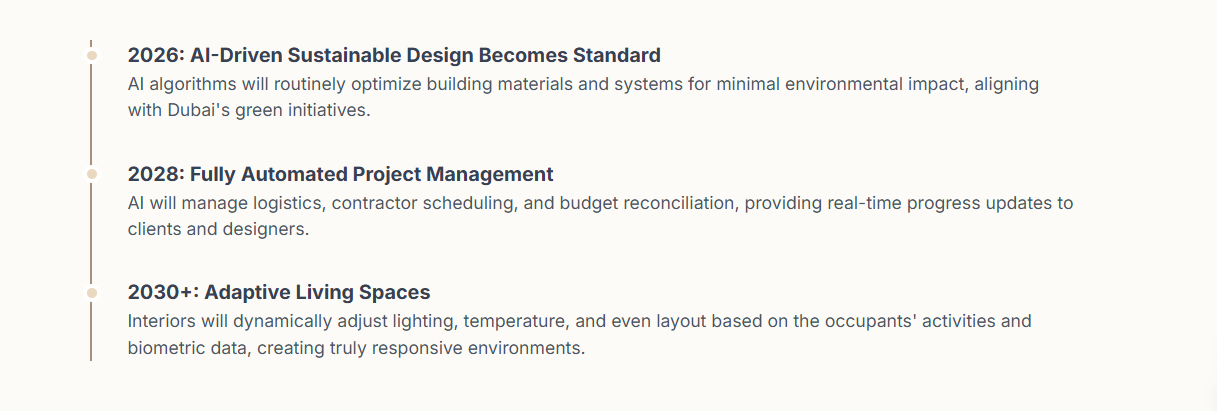
For design firms, developers, and tech startups, the message is clear: strategic AI adoption is no longer optional. Investing in the right tools, upskilling talent, and forging collaborative partnerships will be essential to maintaining a competitive edge. The future of design in Dubai is intelligent, adaptive, and endlessly innovative, and AI is the blueprint making it a reality.

